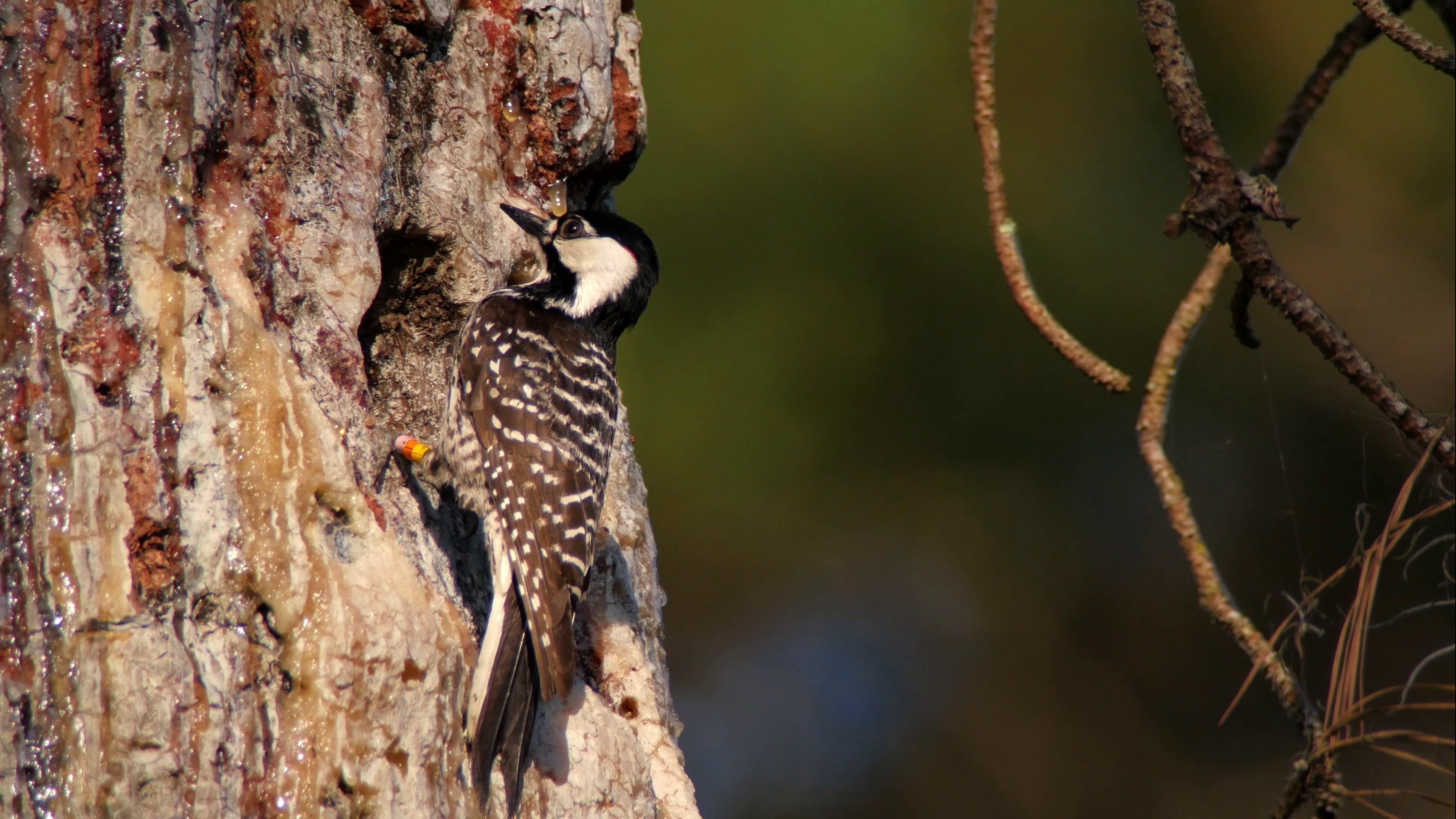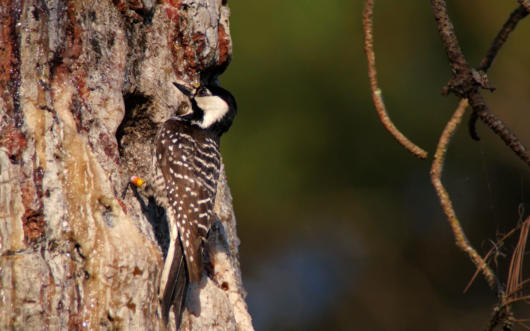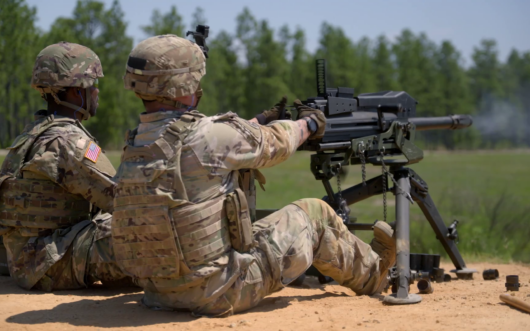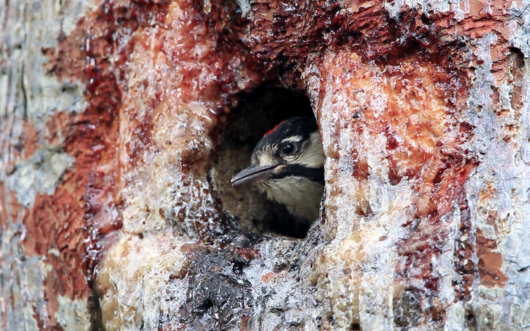Bring biodiversity, woodpeckers, and community-driven conservation into your classroom.
Explore how collaboration among unlikely partners can protect a keystone species, revitalize critical habitat, and demonstrate that conservation success is possible when science and community work hand in hand. This educator guide supports classroom discussion, NGSS-aligned learning, and hands-on opportunities for student engagement.
GRADES
9 – 12+
SUBJECTS
Biology, Storytelling, Ecology, Ecosystem Engineering
Episode Overview
Woodpecker Wars chronicles efforts to restore the endangered red-cockaded woodpecker (RCW) in North Carolina. , a tiny bird with an outsized impact on the longleaf pine ecosystems of North Carolina and the southeastern United States. Once common across the region, RCW populations plummeted due to widespread logging, habitat loss, and fire suppression. Today, these birds survive in only a fraction of their historic range.
The film follows biologists from the U.S. Fish and Wildlife Service as they team up with local landowners, conservation groups, and even members of the U.S. Army stationed at Fort Bragg. Together, they are using creative strategies like installing artificial nest cavities, restoring longleaf pine forests with controlled burns, and coordinating land-use practices that balance human needs with wildlife conservation.
Discussion Questions
- (Before the film) What role do you think fire plays in a forest ecosystem?
- (Before the film) List five endangered species and come up with ideas for why each species is endangered. Identify any similarities among the causes you identified.
- Create a conceptual model that illustrates how plant and animal species diversity is naturally maintained in the longleaf pine ecosystem.
- How have controlled burns benefited the RCW and other species, especially compared to previous fire suppression strategies?
- Describe three specific species that could benefit from conserving RCWs.
- Collaboration between different people and groups is essential for effective conservation. Describe some specific examples of collaboration in the film and how they have been successful.
Key Concepts
- Controlled Burns: The process of setting low-intensity, planned fires to prevent future wildfires and revitalize forest ecosystems.
- Ecosystem Engineers: Organisms that directly or indirectly create, modify, or maintain habitats.
- Ecosystem Services: Ways in which humans benefit from ecosystems. Ecosystem services are essential for human health and well-being.
- Habitat Fragmentation: The division of a large, continuous habitat into smaller, disconnected patches, through natural disasters like fire or human activity like road-building.
- Keystone Species: A species that has a disproportionately large effect on its environment relative to its abundance.



